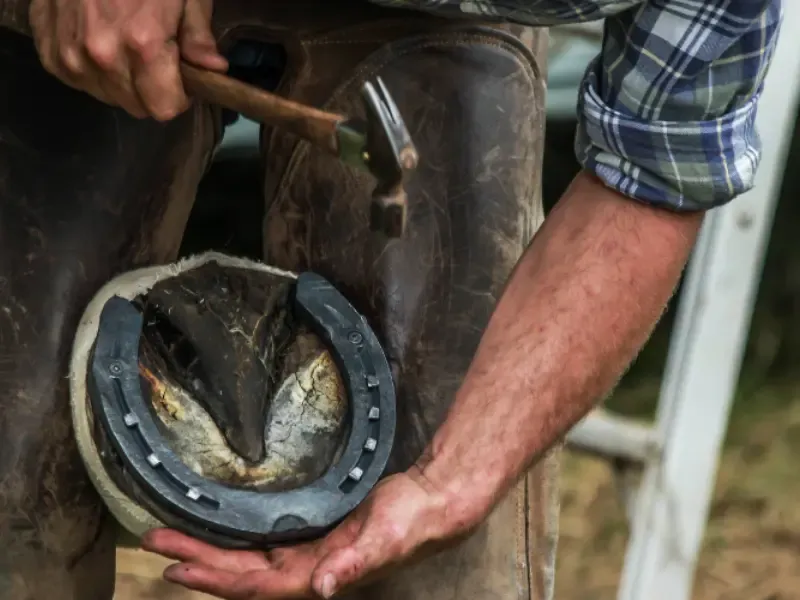
Keep Your Horse Moving Their Best with Corrective Shoeing
Corrective shoeing has become a blanket term to refer to many different aspects of shoeing. These practices can address a wide range of issues adversely affecting the gait, stride, and overall movement of a horse. High Caliber Performance Veterinary Sports Medicine is proud to offer radiographs and a chance to work with your farrier for the best approach to your horse’s shoeing needs.
The Use of X-Rays in Shoeing
X-Rays (radiographs) are a key component in horseshoeing your horse properly, when needed. The images of the hoof provide insight into the angles of correction needed to ensure your horse has the best hoof set up for their structure. Guided shoeing may aid in injury prevention, management and protection after recovery and rehab. Working directly with your farrier guarantees a comprehensive approach to your horse’s specific needs.
Our recommendations are to take baseline images a few days (3-5) after the last shoeing cycle. From there, angles can be altered on the next cycle or sooner, pending what your farrier prefers. In cases where immediate changes are required, we can coordinate with your farrier to be there at the same time to ensure correct shoe set up at that time.
Hoof problems not only can cause pain to your horse but also hinder his or her movements and cause issues and lead to injuries to other parts of the body. We prefer to work with your farrier by providing radiographs to help ensure the angles of the corrective shoeing are suited for your horse’s conformation and movement. Farriers versed in corrective and performance shoeing can address many issues that affect the hoof.
Abnormalities and Proper Corrective Shoeing
Horses with poor confirmation or hoof abnormalities are subject to tendon and ligament strain, navicular disease, and can have issues staying sound in training or even trail riding. We believe in the idea “No Hoof, no Horse” as the hoof is a large component to biomechanical and postural dysfunction. Our goal at High Caliber Performance is to assist in maintaining the health and wellness of the horse from the ground up!
Corrective shoeing or therapeutic farrier work cannot solve all problems horse owners face, but it is important to know that foot health can certainly address a multitude of issues. General horseshoeing usually includes trimming to reduce excessive hoof length and applying shoes to aid in traction and protection of the hoof wall. Corrective horseshoeing refers to when farriers address other ailments such as conformational issues, lameness, hoof cracks and defects, even infections and diseases. Many farriers use various shoes and pads, and even the application methods are instrumental in correcting issues that affect the soundness of horses. Some examples of corrective shoes include heart bar shoes, egg bar shoes, straight bar shoes, pads, casts, elevated heel shoes and many other variations and specialty shoes.
Expert farriers can also create custom therapeutic shoes. These different shoe types can aid in alleviating discomfort while walking by adjusting the height and angles to restore balance. They can also improve shock absorption when the hoof hits the ground as the horse moves. High Caliber Performance Veterinary Sports Medicine is highly focused on movement medicine which includes assisting your farrier with providing the information needed to build the best foot.
Build a Better Corrective Shoeing Plan
Proper horseshoeing is a crucial part of maintaining the overall health and wellness of your horse. Choosing a farrier that is well trained and knowledgeable about the many ways horseshoeing can treat and prevent injury and illness and keep your horse sound, healthy, and happy. Have questions about your horse’s hooves or other shoeing issues? Get in touch with the team at High Caliber Performance.